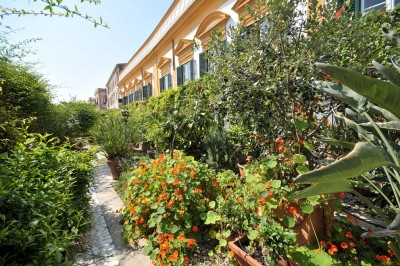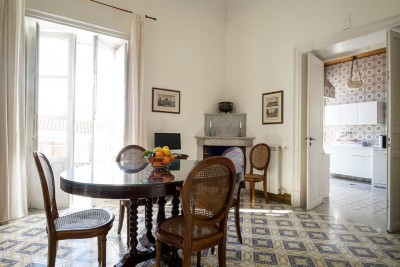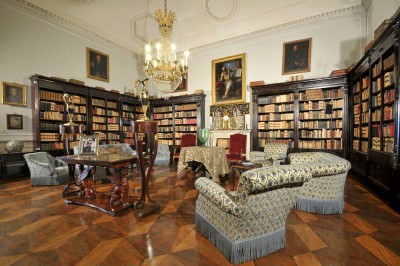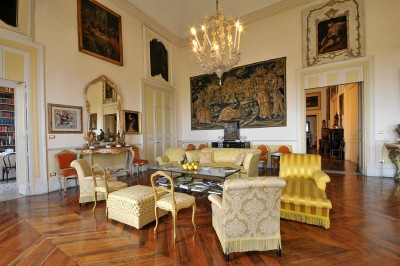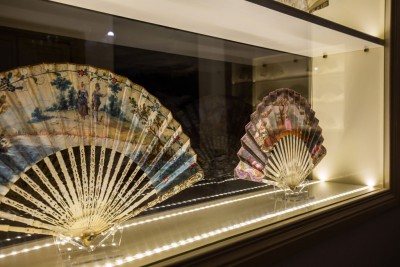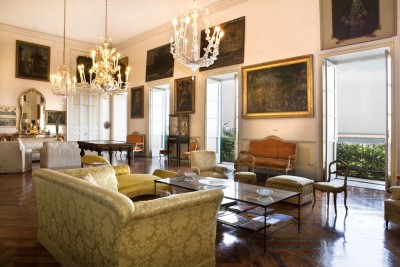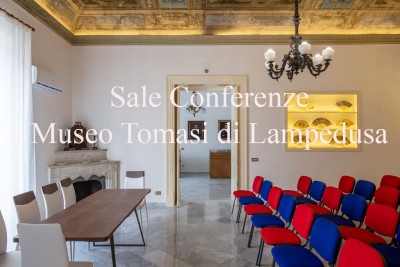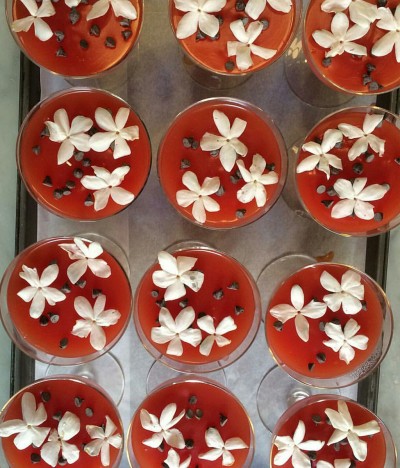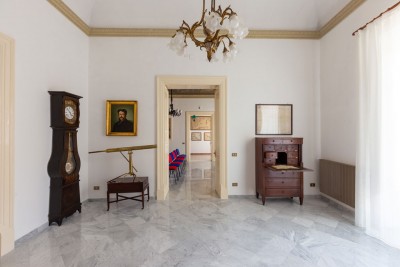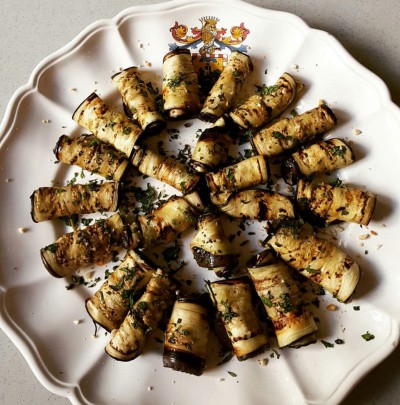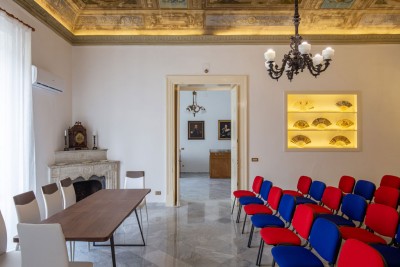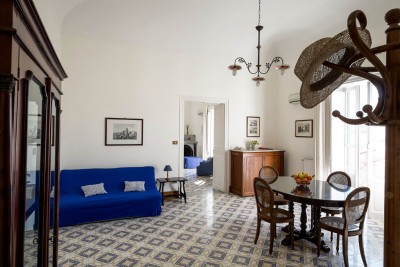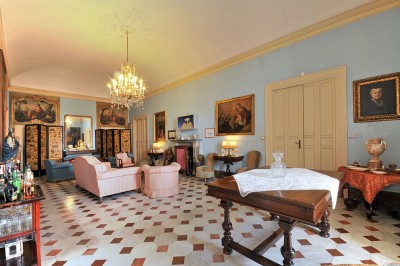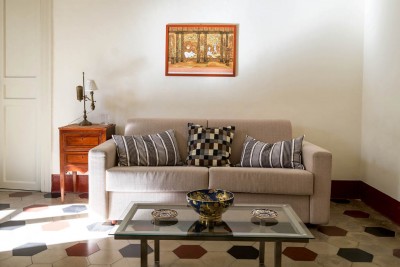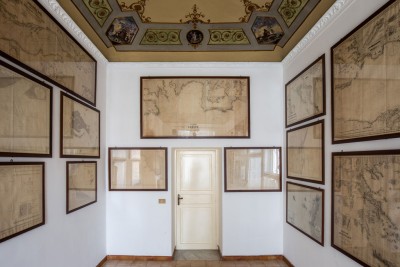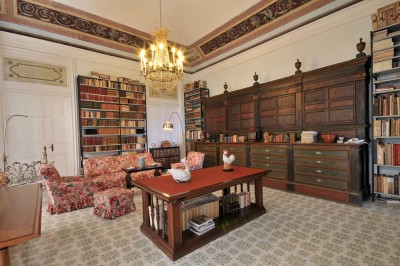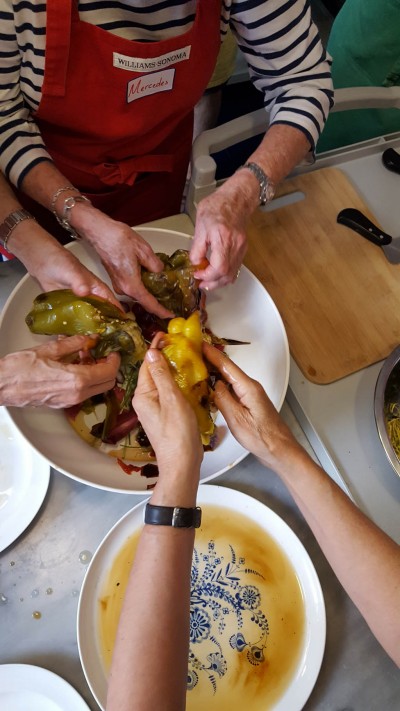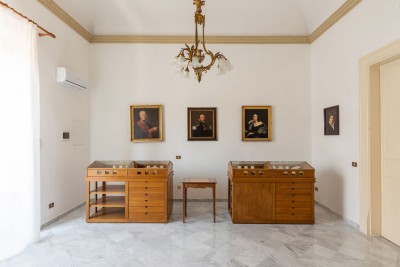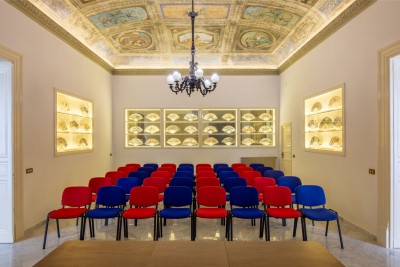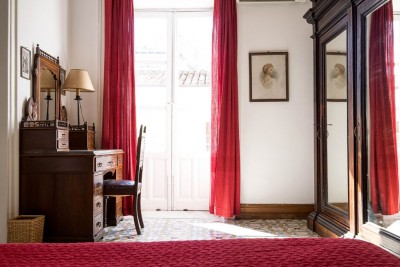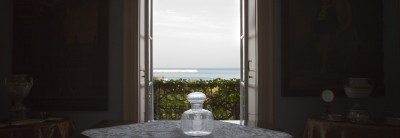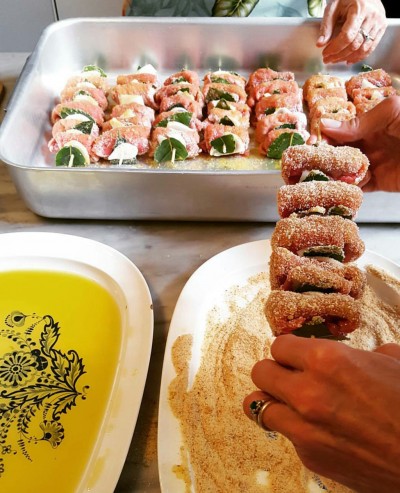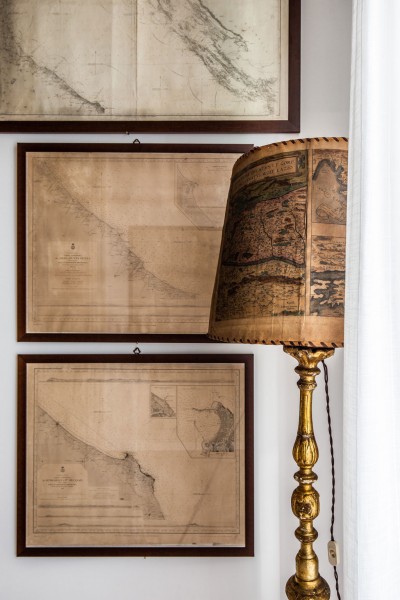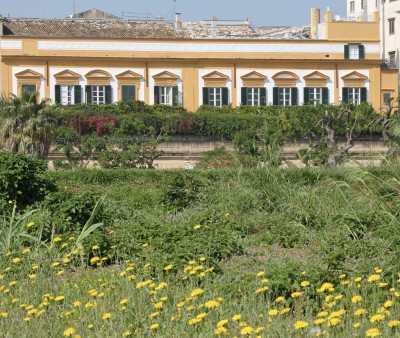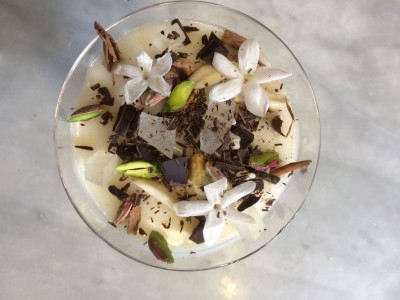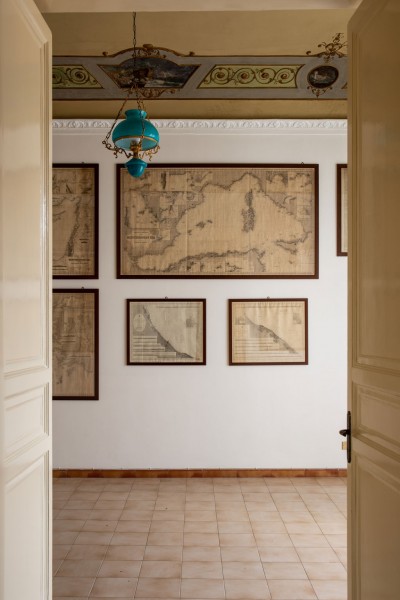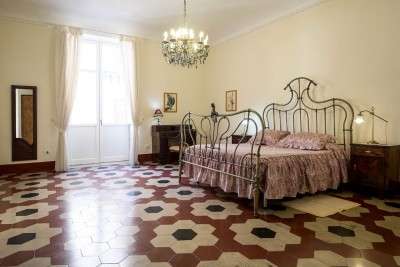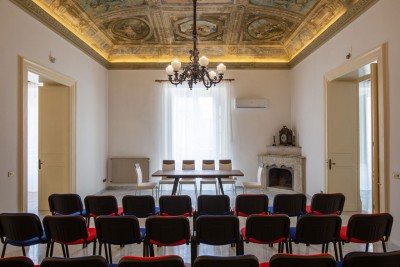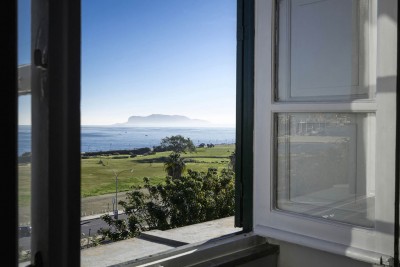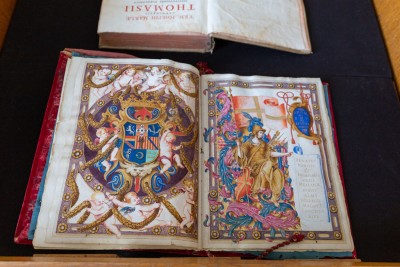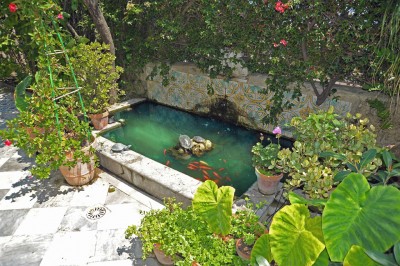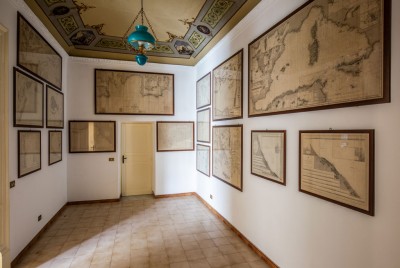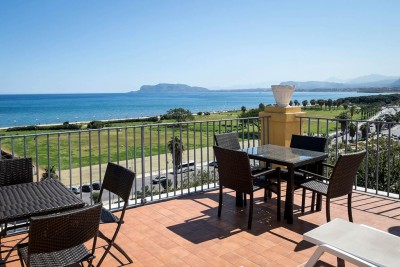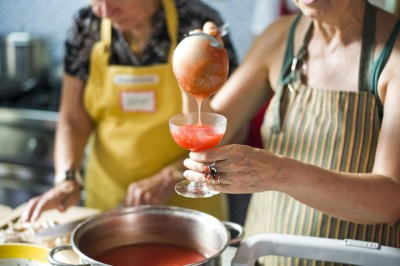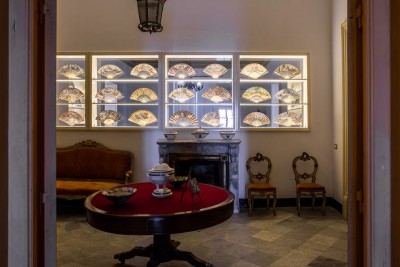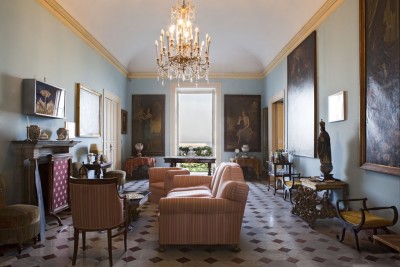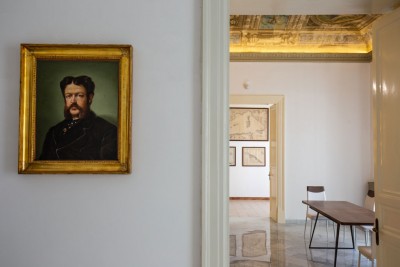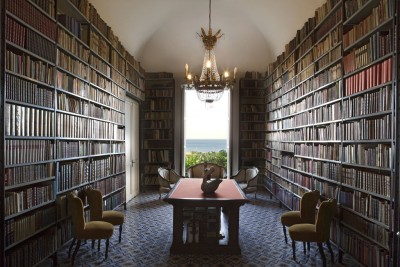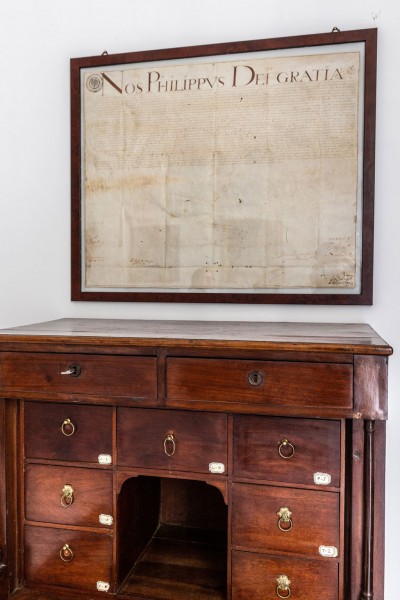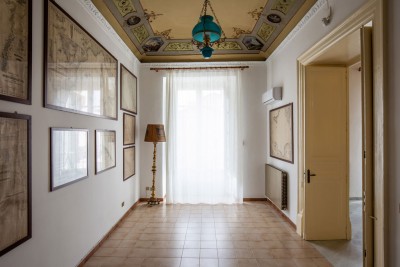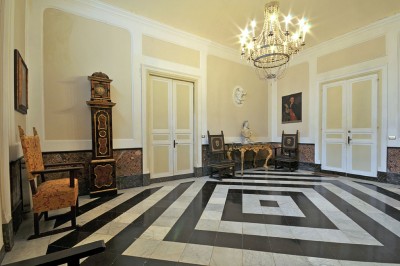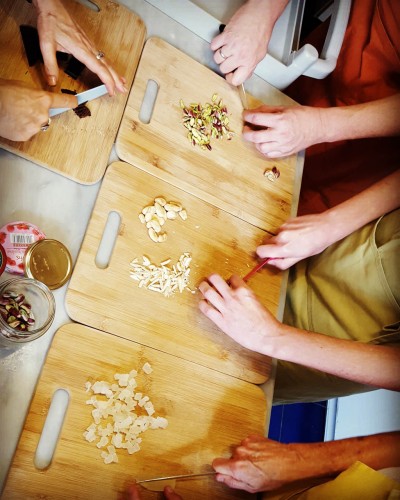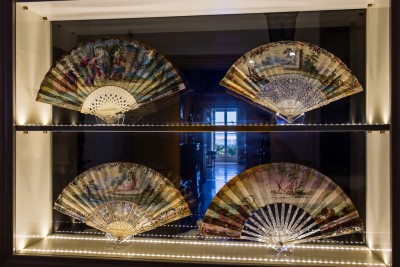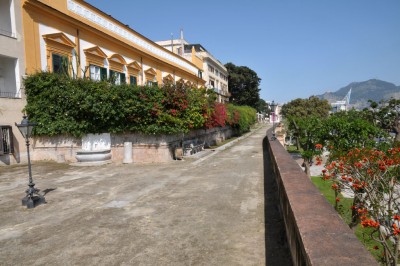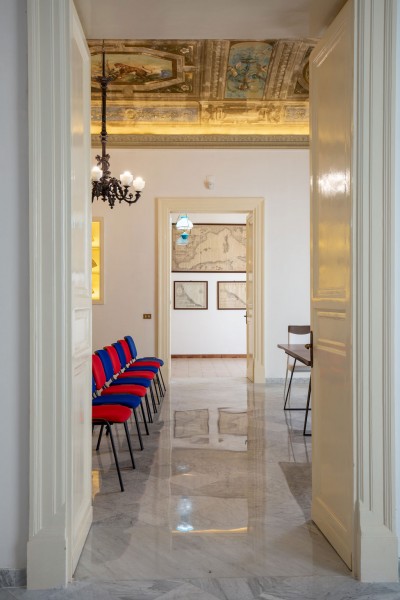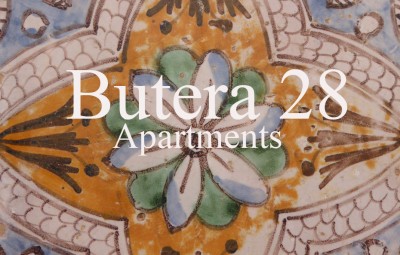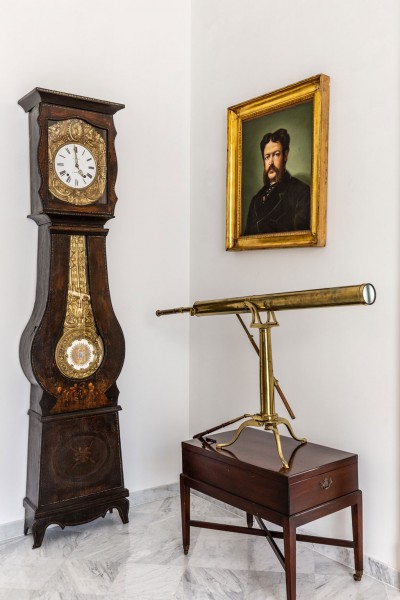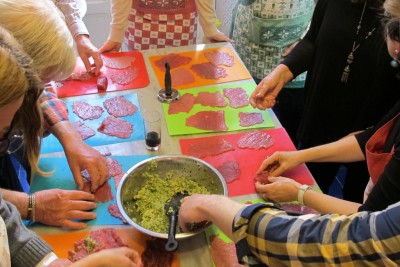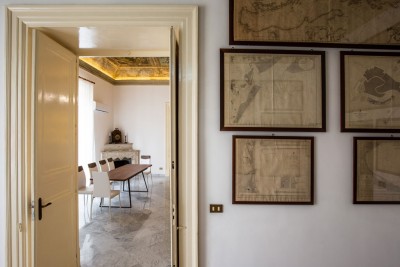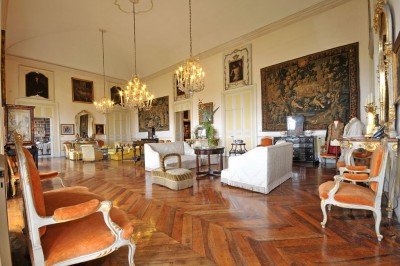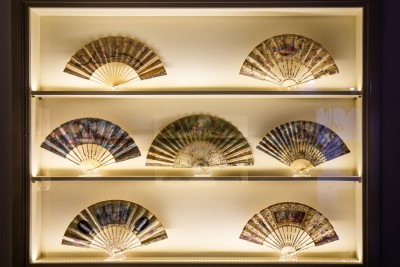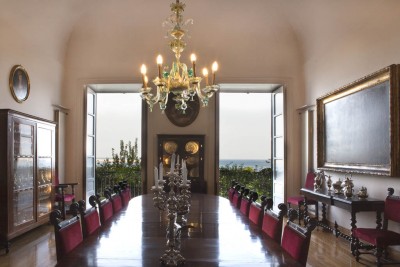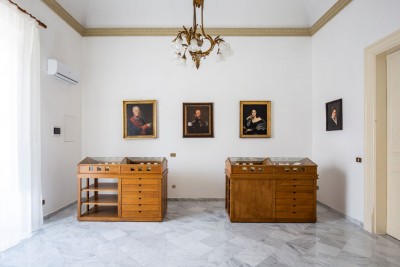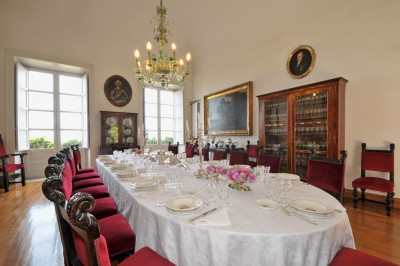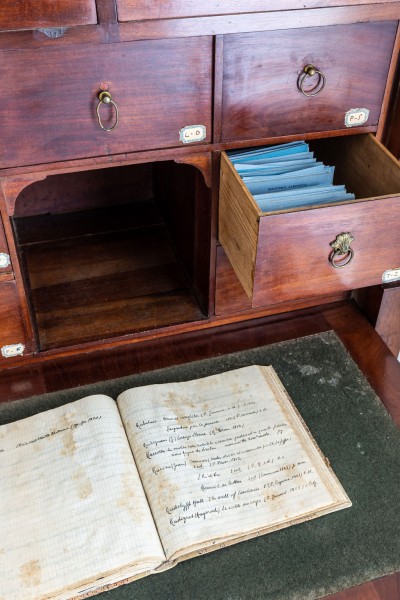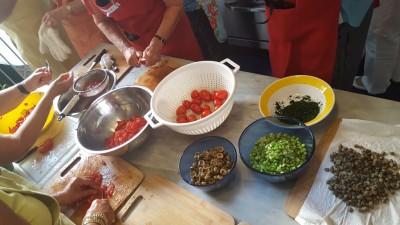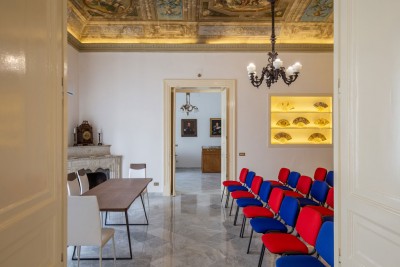Contact the abode
Palazzo Lanza Tomasi is located in the historic centre of Palermo in the heart of the Kalsa district, whose name was taken from the Arabic word ‘Halisa’, meaning ‘the chosen citadel of the Emirs’. Built at the end of the seventeenth century on the sixteenth-century Spanish ramparts called Le Mura della Cattive (literally translated as the ‘Walls of the Bad People’), the Palazzo’s twelve windows of its façade and luxuriant terrace, a veritable rooftop hanging garden rich in Mediterranean and subtropical plants, overlook Palermo's splendid seafront. The Palazzo was the last home of Prince Giuseppe Tomasi di Lampedusa, the famous author of ‘The Leopard’ (“Il Gattopardo”), who spent the final years of his life there until his death in July 1957, after the destruction of his ancestral residence, Palazzo Lampedusa, during the Allied bombings on 5 April, 1943. His adopted son, Gioacchino Lanza Tomasi, reconstructed the entire property in the 1970s and lovingly oversaw its restoration. The main charm of Palazzo Lanza Tomasi lies in its location and the beautiful interplay of space and light. The décor displays all the character of the great patrician residences of Palermo and features a collection of furniture and furnishings made by the finest Sicilian cabinetmakers.
The main ‘piano nobile’ floor of the Palazzo is largely constituted by a house-museum ‘caso museo’ dedicated to the writer. Giuseppe Tomasi di Lampedusa’s historical library has remained intact since his death. All his manuscripts are exhibited in the ballroom: the complete manuscript of “Il Gattopardo”, the manuscript of the fourth part of the novel containing a page that does not appear in the publication, the typescript, the manuscripts of "Lessons in French and English Literature" and "Short Stories" and an early draft of " La Sirena". The décor to be found on the monumental staircase, in the two entrance halls and in the library are almost all items of furniture and paintings which were originally in the former Palazzo Lampedusa and the Palazzo of Santa Margherita di Belice, the summer residence of the Filangeri di Cutò family, the writer's maternal family, which was destroyed by the Belice Valley earthquake in 1968. There are two large 18th-century vases from Caltagirone in the library and, above the fireplace, there is a signed Saint Jerome painting by Jacopo Palma the Younger.
In the ballroom, the panels above the doors and some of the 18th-century furniture also came from Palazzo Lampedusa, as did many of the paintings on display, including a fascinating small work by Domenico Provenzano depicting the family of the ‘Duca Santo’ or Holy Duke Giulio Tomasi di Lampedusa, Duke of Palma, namely San Giuseppe Maria Tomasi and the Venerable Sister Maria Crocifissa, who was the ‘Beata Corbera’ or Blessed Corbera referred to in "Il Gattopardo ". The rest of the furniture on this floor was brought here from Palazzo Lanza di Mazzarino, including a superb carved marble table from the mid-16th century, originally in Villa Palagonia, two rare Sicilian cabinets in ebony and ivory from the early 18th century, two Rezzonico-style cage chandeliers from Murano and a pendant chandelier from the era of Louis XVI, together with paintings by Pietro Novelli, Antonio Catalano and Federico Barocci.
Among the works by modern and contemporary artists, there are some set design sketches by Arnaldo Pomodoro, Mimmo Paladino, Giulio Paolini and Robert Wilson, as well as two pen portraits drawn by Pablo Picasso from 1910, depicting the Marchesa Anita di Villa Urrutia, Gioacchino Lanza Tomasi's grandmother, and a portrait of his mother Conchita signed by Giulio De Blas.
The third floor of the Palazzo has been divided into apartments that are offered for holiday accommodation.
THE HISTORY OF PALAZZO LANZA TOMASI
Palazzo Lanza Tomasi directly overlooks Palermo's seafront. It was built on military casemate bunkers behind the 16th-century city walls in the second half of the 17th century. At the beginning of the sixteenth century, at a crucial moment for naval supremacy in the southern Mediterranean, Spain provided the cities of Sicily with new fortifications. Bastions were erected for the new artillery warfare: the Palermo waterfront was defended to the north by the Fort of Castellamare and to the south by the Bastion of Vega, while in between the two the so-called Bastion of Thunder or ‘bastione del Tuono’ was constructed. The area close to the walls was militarised, and it was not until the second half of the seventeenth century that Palazzos were commissioned in proximity of the walls. The Tuono bastion was demolished around 1720 and the Vega bastion towards the end of the same century. The first new buildings to be commissioned were Palazzo Branciforte di Butera and the Church of St. Matthias the Apostle and the Novitiate. The Branciforte family owned the entire stretch of the walls from Porta Felice to the Tuono bastion. The properties behind the bastion were ceded to the Gravina family and leased by them to the Theatine Fathers, who used them as their Imperial College for educating the children of noble families.
The Collegio was founded during the War of the Spanish Succession, and in the year of its foundation, 1728, Palermo recognised Charles VI of Habsburg as its sovereign. The College was closed in 1768 and the Palazzo was purchased by Giuseppe Amato, Prince of Galati. He unified the façade facing the sea following the Vanvitellian style, formed by ten windows with a terrace measuring 80x9 metres. In 1849, the Palazzo was acquired by Prince Giulio Fabrizio di Lampedusa, an amateur astronomer, using the compensation paid to him by the crown for the expropriation of the island of Lampedusa. Giulio Fabrizio served as the model for the protagonist of "The Leopard", the novel written by his great-grandson Giuseppe Tomasi di Lampedusa. In 1862, the De Pace family, a family of shipowners related to the Florios, bought half of the building and transformed it according to the taste of the time. The grand staircase was built using materials taken from the demolition work carried out for the construction of the Teatro Massimo, and the large ballroom was constructed with alternating walnut and cherry parquet floorboards.
In 1948, Giuseppe Tomasi di Lampedusa, who had lost the family home during the bombardments of 23 April, 1943, repurchased the property from the De Pace family and lived there until his death in 1957. His adopted son, Gioacchino Lanza Tomasi, reunified the entire property and carried out a complete restoration of the building. The writer's library and ballroom are largely filled with furniture taken from the destroyed Palazzo Lampedusa, while other rooms are decorated with furnishings from Palazzo Lanza di Mazzarino. The Lanza Branciforte family, of Swabian origin, held the title of Prince of Butera, the highest peerage in the Kingdom as well as that of Prince of Trabia, the second peerage in the Kingdom, in addition to the territory of Mazzarino. The Tomasi family's history includes a mystical devotion of Duke Santo, the founder of Palma Montechiaro, whose children include Cardinal San Giuseppe Maria Tomasi and the Venerable Sister Maria Crocifissa, the author of several mystical texts, who is buried in the Benedictine Monastery of the Holy Rosary in Palma Montechiaro.
CONFERENCE ROOMS AND THE TOMASI DI LAMPEDUA FAMILY MUSEUM
The monumental staircase of Palazzo Lanza Tomasi provides access to the south-west wing, where the Conference Halls and the Tomasi di Lampedusa Family Museum are located. The brightly lit rooms, frescoed ceilings and white marble floors make it an ideal space for hosting conferences and other cultural events. The halls are equipped with Wi-Fi, video projectors, screens and sound systems and can accommodate around seventy people. Cafeteria services are available on request, and the reception is staffed by university-trained personnel speaking all the principal European languages. Cocktails, breakfasts and dinners can also be organised, with or without musical accompaniment, in the adjacent spacious halls on the main ‘piano nobile’ floor for a capacity of up to 150 people. The Duchess personally takes care of the creation and preparation of the menus, offering a refined reinterpretation of classic Sicilian cuisine.
The conference space consists of three rooms and restrooms. The central hall has a characteristic frescoed vaulted ceiling, depicting oriental scenes from a harem, typical of the late 19th century, and an exceptional collection of French fans from the era of Louis XVI. Looking across from the fan display, beyond Giuseppe Tomasi di Lampedusa's historical library and the ballroom, the view sweeps down to the Gulf of Palermo's waterfront. In the left hall of the central room, there is a collection of Mediterranean nautical charts, compiled by the British Navy in 1870 and kept onboard Louise, the yacht owned by Gioacchino Lanza Tomasi's grandfather. On the opposite side is the Tomasi di Lampedusa Family Museum, displaying paintings, objects and documents related to the author's family.
Of particular note is the portrait of Prince Giulio Fabrizio Tomasi di Lampedusa, the writer's great-grandfather, an amateur astronomer and the main inspiration for the protagonist of "Il Gattopardo”. Below the portrait is a British-made telescope from 1790. A similar instrument is located in the Astronomical Observatory of the Royal Palace of Palermo. Among the exhibited documents is the diploma granting the Tomasi family the title of Princes of Lampedusa over the feudal possession of the island, as bestowed upon them by King Philip III of Sicily and IV of Spain. The parchment is dated 1638. Underneath it is a cabinet containing the writer's two library card indexes: a register that is pre-World War II, which tracks the dates of his purchases and the books he read, and a subsequent card catalogue, compiled after he moved to the residence at 28 Via Butera. Opposite are portraits of the writer's mother’s relatives, the Tasca Mastrogiovanni Filangeri di Cutò family. Two showcases display a series of documents related to the 17th-century ‘Family Saints’, as they were known, Saint Giuseppe Tomasi di Lampedusa and his sister, the Venerable Sister Maria Crocifissa. Of great interest is an illuminated manuscript from 1654 containing the granting of honorary citizenship of Messina to Duke Giulio Tomasi.
FACILITIES AND SERVICES: ACCOMMODATION, CULTURAL VISITS AND PRIVATE EVENTS IN PALERMO
Palazzo Lanza Tomasi is open to the public only for groups of no fewer than 15 people. The owners, the Duke and Duchess of Palma, Gioacchino and Nicoletta Lanza Tomasi, who reside permanently at the Palazzo, speak Italian, English, French, German, Spanish and Russian. They personally conduct the tour of the terrace and ‘piano nobile’ first floor. During the visit, you will have the opportunity to admire the historic library of Prince Giuseppe Tomasi di Lampedusa and his manuscripts, including the complete manuscript of "Il Gattopardo”. The owner, the writer's adopted son and literary heir, is also a musicologist and opera house director, and is available for conferences on the novel and its author, as well as on music-related topics and Sicilian history.
It is possible to organise cultural events such as concerts, exhibitions and book presentations, as well as cocktails, lunches and dinners for groups interested in art, culture, literature and Sicilian gastronomy. The Duchess personally takes care of the preparation of the menus, which consist of traditional Sicilian dishes, often revisited by her, reflecting the millennial influences of the various cultures that have shaped Sicily's history. The Duchess also organises Sicilian cooking classes (such as "A Day Cooking with the Duchess"), offering a captivating culinary and cultural experience that includes a visit to the picturesque Capo market, a cooking lesson in the kitchen of the Palazzo, lunch and a visit to the ‘piano nobile’ floor and terrace.
For more information, please see: https://www.youtube.com/watch?v=K4S3Ss6R3r0.
ACCOMMODATION IN ONE OF THE MOST BEAUTIFUL HISTORIC PALAZZOS IN PALERMO
One floor of the Palazzo has been divided into apartments available for short stay accommodation. They are all furnished with period furniture, have fully equipped kitchens and are provided with Wi-Fi, air conditioning, central heating, washing machines and TV. Some also have terraces with stunning sea views or balconies overlooking the historic centre.
For more details, please see: https://www.youtube.com/watch?v=2vulC4sjIU4
PLACES OF INTEREST IN THE VICINITY
From Palazzo Lanza Tomasi, you can easily reach all the tourist and cultural attractions of the historic centre on foot. In the immediate vicinity, are the churches of Santa Maria della Pietà, Santa Teresa alla Kalsa, Santa Maria degli Angeli (la Gancia), Santa Maria della Catena, Palazzo Abatellis, the Botanical Garden, Palazzo Chiaramonte, Piazza Marina and Palazzo Mirto.
In just a few minutes, you can also reach the Church of San Francesco, the Oratory of San Lorenzo, Vucciria market, Piazza San Domenico, the Oratories of SS. Rosario in Via Valverde, Santa Cita and the church of Santa Cita. Walking along Via Alloro, you will come across the Modern Art Gallery, Palazzo Gangi, the Quattro Canti with the churches of La Martorana, San Cataldo, Santa Caterina and San Giuseppe dei Teatini, Piazza Pretoria with its famous fountain, and Casa Professa church.
Continuing along Via Vittorio Emanuele, you will reach the Cathedral, the Diocesan Museum, the Royal Palace with the Palatine Chapel and San Giovanni degli Eremiti. A short stroll will also lead you to the Teatro Massimo and the Capo Market.
